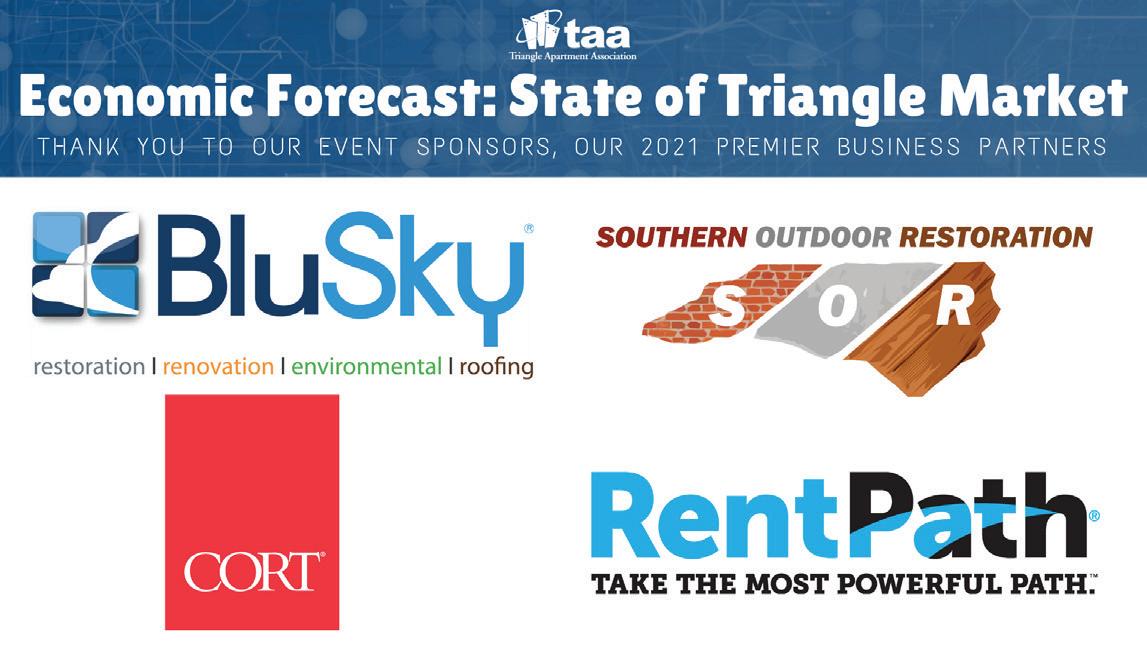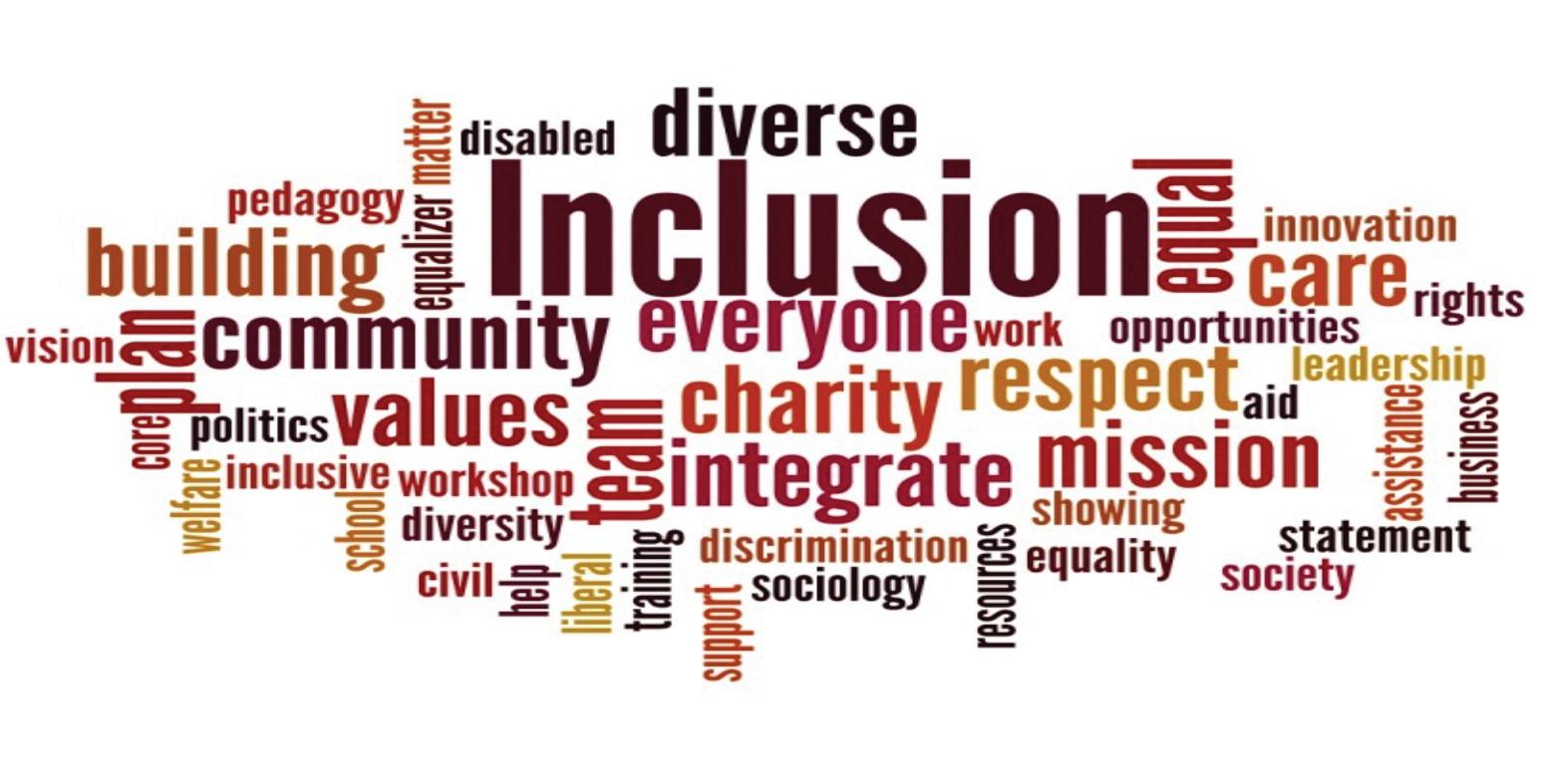
7 minute read
Legal Issues
Legal Issues Issues NC Rental Assistance and Summary
Ejectment Update By: Brownlee Whitlow & Praet, PLLC
Advertisement
There are many rental assistance programs that residents of Triangle multifamily communities may be eligible for, and they are not equal in terms of what you will receive as the housing provider, and what you must agree to in exchange for the rental assistance funds. Below we take a high-level discussion of a number of the more popular and better funded programs. Many of these programs may also supply utility assistance as well, but for purposes of the article we will only review the rental assistance aspect of the programs.
EMERGENCY RENTAL ASSISTANCE PROGRAM-CONSOLIDATED APPROPRIATIONS ACT, 2021
This is the new program where $25 million was allocated to rental assistance programs we have been waiting for since it was signed into law on December 27, 2020. While writing this article on February 22, 2021, a long awaited second FAQ was released, giving further guidance to the grantees (state and local government who received the funds) as to how they should structure their programs to disburse the funds. It is expected these funds at the state level in North Carolina will be administered through the NC Office of Resiliency and Recovery, as the NC HOPE funds were, but that was not certain at the time this article was written.
WHAT IS AVAILABLE: North Carolina will receive approximately $700 million of which Triangle areas may be eligible for: $524 million to NC at a state level, $19 million for Wake County, $14 million to Raleigh, $8.4 million to City of Durham, and $1.2 million for County of Durham.
WHO IS ELIGIBLE: These funds can be awarded for an eligible household which satisfies one of the following criteria: • Qualifies for unemployment or has experienced a reduction in household income, incurred significant costs, or experienced a financial hardship due to COVID-19, • Demonstrates a risk of experiencing homelessness or housing instability, and • Has a household income at or below 80 percent of the area median. Also, eligible households that include an individual who has been unemployed for the 90 days prior to application for assistance and households with income at or below 50 percent of the area median are to be prioritized for assistance, though not much guidance has been given as to how to prioritize these households.
HOW MUCH: Eligible households may receive up to 12 months of assistance, plus an additional 3 months if the extra months are needed to ensure housing stability and funds are available. Residents may apply for additional funds if funds are needed by the resident and still available under the program.
WHAT TO KNOW: If the landlord does not accept the funds they may be released directly to the resident. With funds in hand, the resident may choose to pay the funds directly to the current community or relocate to a different property. With respect to reaching out to the current landlord the following guidance was provided in the February 22 FAQ:
As required by the Act, grantees must make reasonable efforts to obtain the cooperation of landlords and utility providers to accept payments from the ERA program. Outreach will be considered complete if (i) a request for participation is sent in writing, by mail, to the landlord or utility provider, and the addressee does not respond to the request within 14 calendar days after mailing; (ii) the grantee has made at least three attempts by phone, text, or e-mail over a 10 calendar-day period to request the landlord or utility provider’s participation; or (iii) a landlord confirms in writing that the landlord does not wish to participate.
As many of the states and localities were awaiting the February 22, 2021 guidance to complete and release the details of their programs there are no formal details yet for any of the grantees receiving funds identified above, so you will need to review any documentation on the programs that you receive. There is also some concern that if you accept funds from a resident who received funds under this program that you will be subjecting community to various duties or responsibilities, but it is not clear yet how and if these will apply.
FEDERAL CARES ACT FUNDS/NC HOPE WHAT IS AVAILABLE:
Approximately $125 million dollars in federal funds that were appropriated through the CARES Act were administered by North Carolina Office of Recovery and Resilience. Applications for the program were accepted though November 10, 2020, halted for a time until the time to disburse the funds was extended from December 31, 2020 to December 31, 2021.
WHO IS ELIGIBLE: Residents who can demonstrate they are at 80% adjusted median income or less, they are experiencing COVID Hardship and can provide Proof of Residency (General), Current Lease, Past Due Rent/Eviction Notice.
HOW MUCH IS PAID: Up to six months of rent was paid. During the course of this program the calculation changed from actual rent to approximate rent based on a calculated formula.
WHAT TO WATCH OUT FOR: The program has continued to evolve and change while it was being administered. If you received a prior agreement for a resident and another is sent to you, read it carefully, you may find the new terms acceptable. The most resent change as of the time of writing occurred on January 22, 2021. If you have an older agreement you may ask that a new agreement be sent to you.
LOCAL PROGRAMS
WHERE: The following Triangle counties have rental assistance programs: Wake, Durham, and Orange counties all have separate rental assistance programs in place, as well as the Triangle municipalities of Cary, Chapel Hill, and Durham.
WHAT TO WATCH OUT FOR: Each program is different with very different terms. Each agreement should be reviewed very carefully.
SUMMARY
As you can see there are many programs that a resident may present to you. A few of the programs even require you to forgive base rent. Additionally, a resident may be eligible under different programs, but ineligible once assistance is received from any program. You should review the program carefully and determine whether it is a good business decision for your community.
This article is not legal advice and should not be relied upon as such, nor does it create an attorney client relationship.
On February 16, just over 100 attendees joined us for TAA’s Economic Forecast: State of Triangle Market. Our Government Affairs Director, Dustin Engelken, served as the Moderator for the virtual event. The panelists covered topics such as the economic outlook, impacts of COVID-19, and an overview of what is currently happening in our market. Whitney Nye, Apartments.com, joined the group at the end to share information from their search analytics as well. Thanks to the generosity and support of our sponsors, we were able to show their commercials between each of the panelist’s presentations.
Thank you to our Panelists:

Michael E. Walden, Ph.D. Professor & Extension Economist | NC State University John B. Linderman, Jr., Principal, Managing Director | Avison Young Victoria Lim, Market Analyst | CoStar
Thank you Event Sponsors, the 2021 Premier Business Partners.

DEI Task Force
The Triangle Apartment Association (TAA) is forming a Diversity, Equity & Inclusion Task Force. The primary goals will be to:
Create and execute a survey to the membership to assess its DEI capacity and bandwidth; and, based on the survey results, provide recommendations to the TAA Board of Directors on steps to move forward its DEI initiative, which is part of
TAA’s Strategic Plan to: • Create environments where people can excel and advance as their authentic selves, and • Improve business outcomes by being more representative of demographics and by bringing together more variety in ways of thinking to better solve complex issues.

The Task Force aims is to be inclusive of race and ethnicity, yet also of gender identity, sexual orientation, ability, culture, generation, veteran status, tenure, and role, among other characteristics. In whole, a collaboration of a diverse group of TAA members whose goal is to work together for the greater good of the organization and industry. The group will meet monthly from April – October 2021 to do its work.



